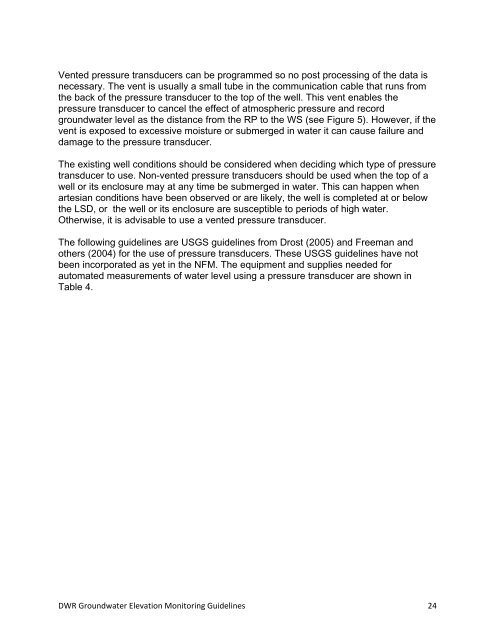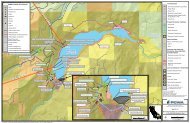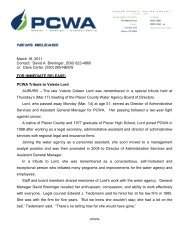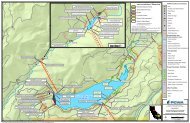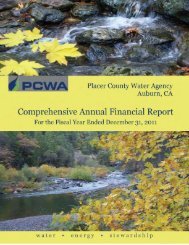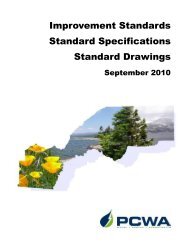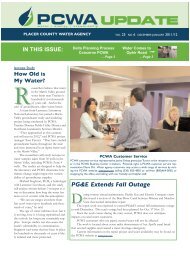Martis Valley Groundwater Management Plan - Placer County Water ...
Martis Valley Groundwater Management Plan - Placer County Water ...
Martis Valley Groundwater Management Plan - Placer County Water ...
You also want an ePaper? Increase the reach of your titles
YUMPU automatically turns print PDFs into web optimized ePapers that Google loves.
Vented pressure transducers can be programmed so no post processing of the data is<br />
necessary. The vent is usually a small tube in the communication cable that runs from<br />
the back of the pressure transducer to the top of the well. This vent enables the<br />
pressure transducer to cancel the effect of atmospheric pressure and record<br />
groundwater level as the distance from the RP to the WS (see Figure 5). However, if the<br />
vent is exposed to excessive moisture or submerged in water it can cause failure and<br />
damage to the pressure transducer.<br />
The existing well conditions should be considered when deciding which type of pressure<br />
transducer to use. Non-vented pressure transducers should be used when the top of a<br />
well or its enclosure may at any time be submerged in water. This can happen when<br />
artesian conditions have been observed or are likely, the well is completed at or below<br />
the LSD, or the well or its enclosure are susceptible to periods of high water.<br />
Otherwise, it is advisable to use a vented pressure transducer.<br />
The following guidelines are USGS guidelines from Drost (2005) and Freeman and<br />
others (2004) for the use of pressure transducers. These USGS guidelines have not<br />
been incorporated as yet in the NFM. The equipment and supplies needed for<br />
automated measurements of water level using a pressure transducer are shown in<br />
Table 4.<br />
DWR <strong>Groundwater</strong> Elevation Monitoring Guidelines 24


